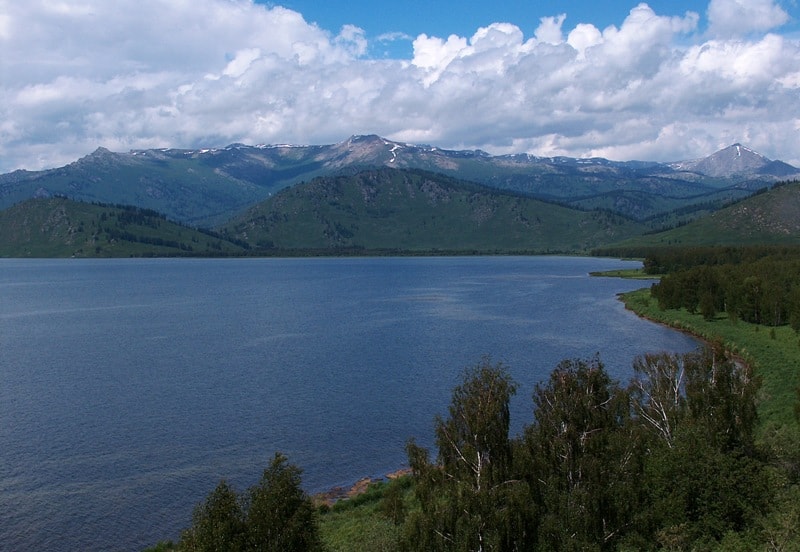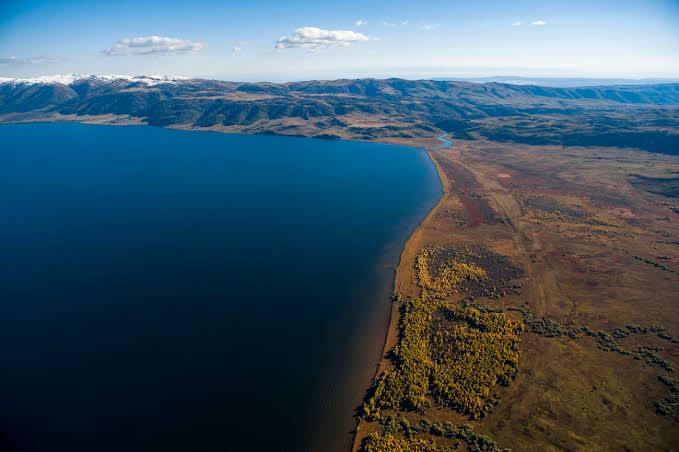Lake Markakol, Heaven of Central Asia

Lake Markakol is a large freshwater lake located in the eastern part of Kazakhstan, located at an altitude of 1447 meters above sea level. Lake Markakol is an amazingly beautiful place known for its incredible landscapes, especially during sunset or dawn.
The minimum depth of Lake Markakol is 10 meters, the maximum is 27 meters, the average depth is 14.3 meters.
It gained wide popularity and recognition among travelers thanks to its crystal-clear water
The lake belongs to the alpine type. The area of the lake reaches 455 square kilometers. 27 small rivers and streams flow into the lake, the largest of them are the Topolevka, Urunkhaika, Tikhushka rivers.
More than 80% of the lake’s water area is part of the Markakol State Reserve. The origin of Lake Markakol is associated with one of the glacial phases of the Quaternary period of the Alpine tectonic cycle, when, as a result of uplifts and faults, a peculiar system of modern ridges and intermountain depressions was formed, which were then exposed to glaciation, traces of which are well expressed on the watershed parts of the Kurchum ridge.
The basin of Lake Markakol is characterized by a peaked, steeply sloping, intensely dissected relief of a mid-mountain appearance. The slopes of the ridges are crossed by deeply flowing river valleys. On the eastern shore of the lake at the mouth of the Urunkhaika River, at an altitude of 1463 meters above sea level, the village of Urunkhaika stretches from south to north for 1400 meters.

It is also known for its rich biodiversity and serves as an important habitat for various plant and animal species.
The lake’s ecosystem is home to a wide range of fish species, including trout and grayling, making it a popular destination for fishing enthusiasts
Lake Markakol and its surrounding region boast diverse flora and fauna due to its unique geographical location and protected status.
- Coniferous Forests: The area around Lake Markakol features coniferous forests dominated by Siberian pine, Siberian fir, and Siberian larch. These forests provide habitat for various bird species and mammals.
- Alpine Meadows: At higher elevations, alpine meadows thrive, adorned with a variety of wildflowers and grasses. These meadows contribute to the overall biodiversity of the region.
- Wetland Vegetation: The lake’s shoreline and surrounding wetlands support a range of aquatic and marsh vegetation, including reeds, sedges, and water lilies.
- Birds: Lake Markakol is heaven for birdwatchers, as it hosts a diverse avian population. Species such as the black stork, osprey, white-tailed eagle, saker falcon, and various waterfowl can be observed in the area.
- Fish: The lake is renowned for its fish diversity. Trout, grayling, pike, and perch are among the common fish species found in the lake’s clear waters.
- Mammals: The region surrounding Lake Markakol is home to several mammal species. These include Siberian ibex, roe deer, wild boar, red deer, moose, lynx, brown bear, and the elusive snow leopard, although spotting the latter is quite rare.
- Reptiles and Amphibians: The area is also inhabited by reptiles like the Siberian grass snake and amphibians such as the Siberian newt and common toad.
It is important to note that the biodiversity and specific species found in the region can be influenced by seasonal variations, climate change, and other factors. Conservation efforts, by the Government of Kazakhstan such as the establishment of the Markakol Nature Reserve, aim to protect and preserve the flora and fauna of the area for future generations, highly appreciated.


